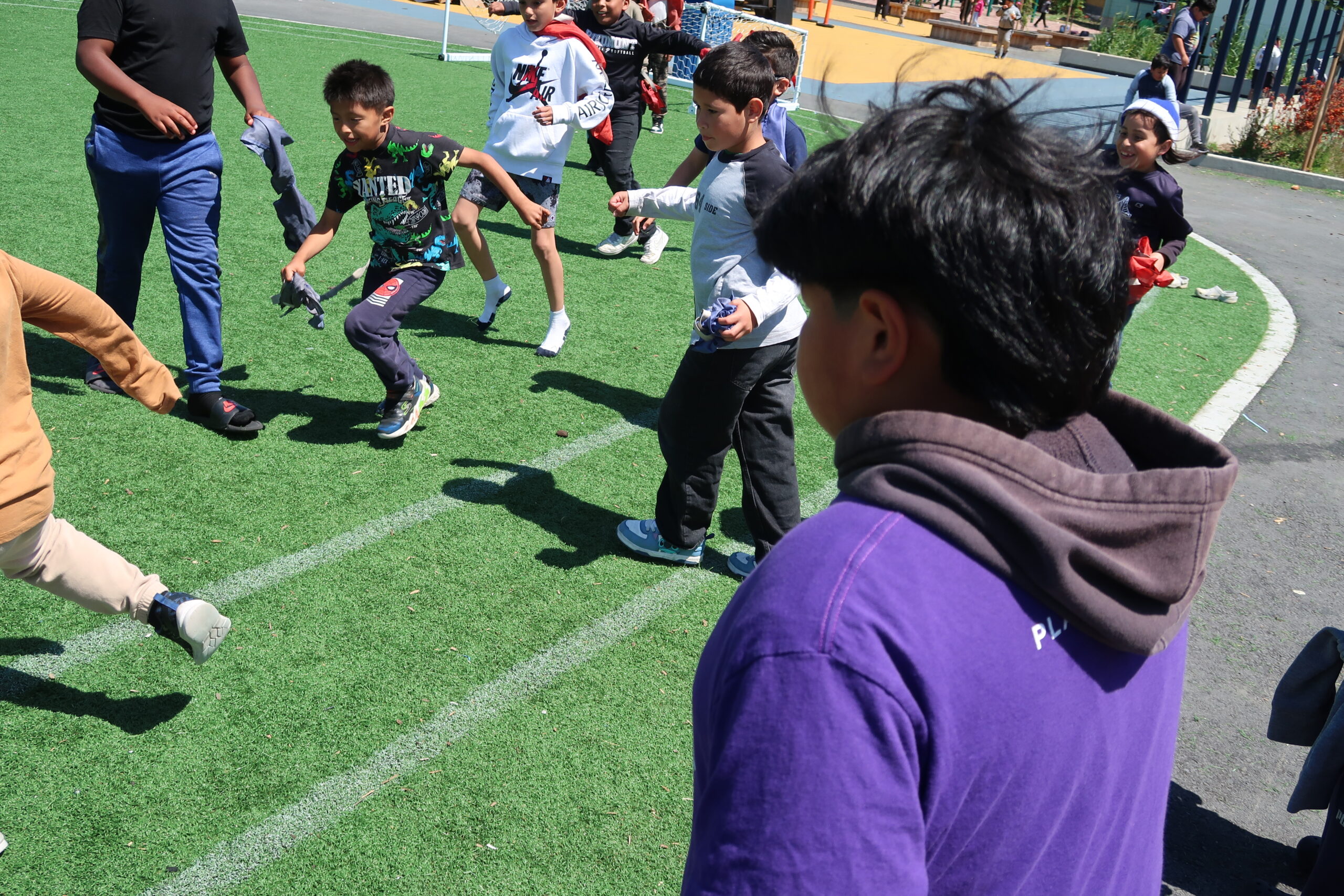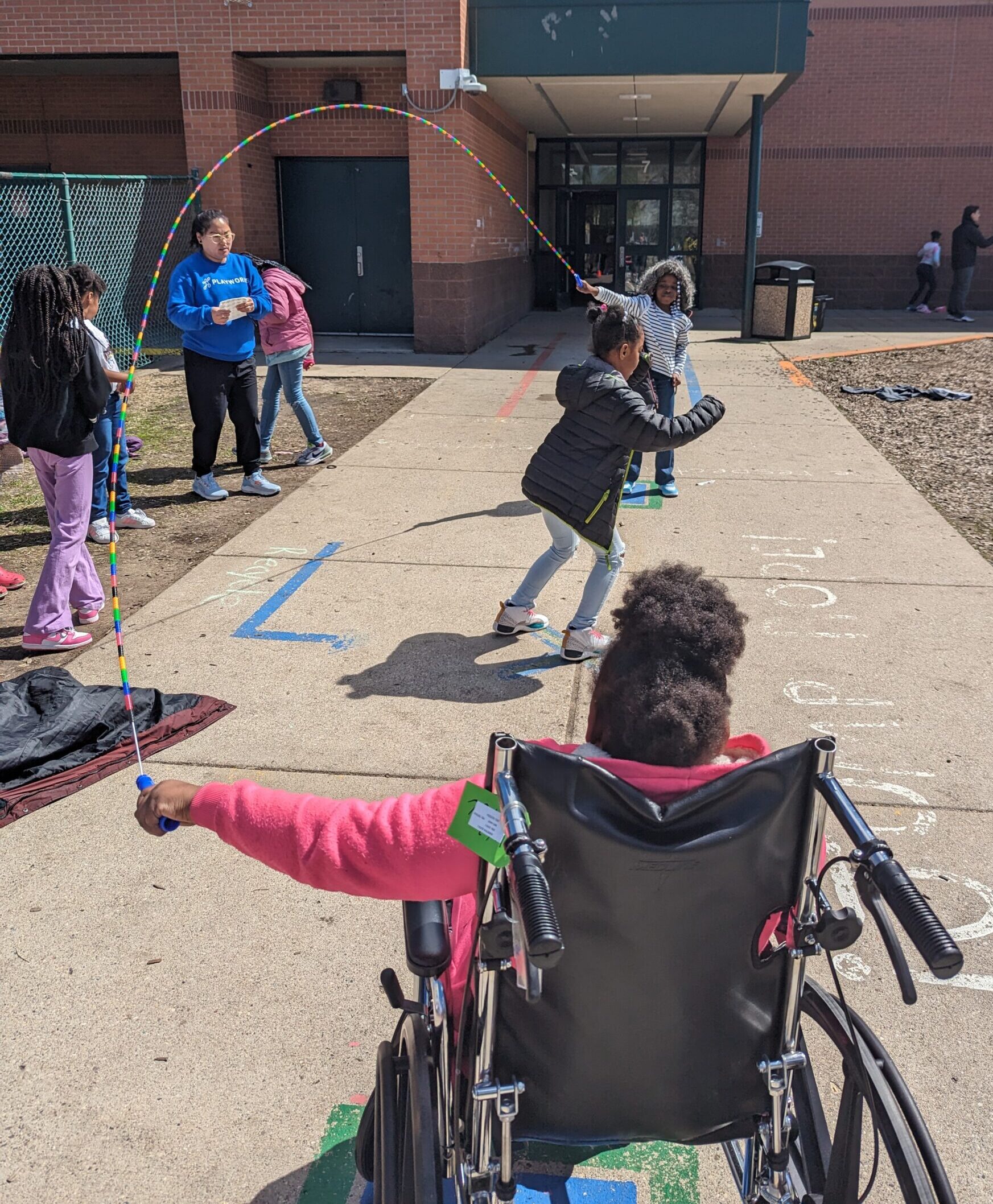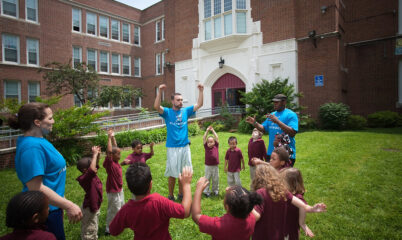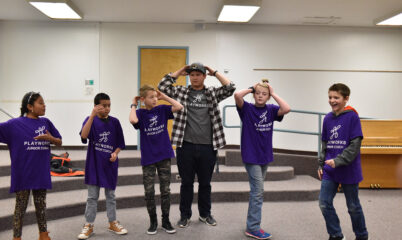A 5th grade student had Brittle Bone Disease, a rare condition where his bones are fragile and prone to fracture. In his four years at the elementary school, he had never been included in play. He would go outside during recess but he never tossed a ball, never went down the slide, never participated in a game of tag, so he never got to benefit from connecting with his peers or adults at school through play. “The school knew and loved this kid and didn’t want him to get hurt,” said former Playworks trainer Lynn Debilzen.
 And then they partnered with Playworks.
And then they partnered with Playworks.
Lynn arrived for a Consultative Visit, a professional development service during which Playworks experts observe recess or playtime and utilize our years of expertise to build an action plan. These plans provide schools with strategies to implement to sustain a positive culture of play alongside a school or organization’s leadership and team. Lynn was eager to understand some of the school’s unique challenges, including how to make play possible for every student. “The teachers were thinking of options to involve that student. I was able to send the school ideas.”
Across the country, kids with varying abilities are excluded from play at a higher rate than their peers. They risk missing out on the many benefits of play. Playworks is trying to change that. As the leading national nonprofit leveraging the power of play to bring out the best in every kid, we see how important it is to help provide some strategies and practices that can help get all kids into the game.
Lynn saw the impact this type of intentionality can make. The school implemented some of her ideas with the student’s buy-in. “When I went back to the school a few weeks later, I got to see that student playing,” said Lynn. “He had that entire experience transformed. We were able to build enough confidence and safeguards where we could build a space where all kids can play.” This student, teachers, and peers, all saw what a difference including this one boy could make in their school community.
Do you work with students? Here are some of Playworks’ best tips:
 Questions to ask
Questions to ask
In order to figure out how to modify the games, playspace, or norms to make play available for all kids, start by asking some critical questions about how recess is currently operating and what the goals are for the future:
- How are students on the playground interacting with students with varying abilities?
- How are adults outside at recess including students with special needs? (i.e. playing games with them, encouraging interactions with peers, etc.)
- How is recess challenging for students with visible disabilities (physical disabilities) or invisible disabilities (autism, epilepsy, deaf or hard of hearing, etc.)?
- What’s the most significant obstacle to students with varied abilities engaging in play?
- Who needs to buy in to trying new strategies that are aiming to include the child/children at the center of these decisions?
Be sure to include students in the process of designing solutions to support them. Be creative, flexible, curious, and respectful understanding their needs, challenges, hopes, and interests.
Building Solutions
How can your school make these changes? Watch Playworks’ webinar for specific tips and information. Here are some highlights:
Games and norms
Modify games and how you teach them: you can use the space and equipment you have to make play available for all kids the standard practice. “Keeping those modifications on the playground each and every single day can contribute to building the safe and welcoming recess environment,” explained Zoe Stevens, Playworks PRO Trainer. You can also modify the methods for teaching games, for example putting the instructions into short visual or auditory segments, using soft voices instead of yelling, using lighter and larger balls, tagging with objects instead of hands, etc.
Shifting norms: Changing the environment, for example playing in smaller groups or designated areas, or teaching game rules in 1:1 settings can help ensure that students can learn and play games.
Identify the goals and the recess team.
What role does everyone play? Here are some ideas:

Leverage an individualized education plan/program (IEP):

Learn more
Learn more about consultative visits. Connect about our services


